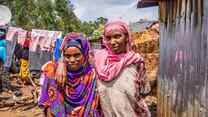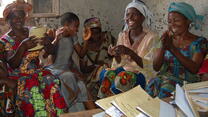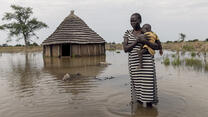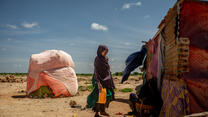This week, world leaders will convene in New York for the annual United Nations General Assembly (UNGA)—a gathering that has unfortunately become notable not for the combined political and diplomatic power concentrated in one place at one time, but for the annual failure to leverage that power to address the world’s most pressing challenges.
This year’s UNGA rightly focuses on the need to make progress against the Sustainable Development Goals (SDGs) and the importance of “rebuilding trust and reigniting global solidarity.” UNGA 2023 arrives in a world of renewed great power rivalry, deepening distrust between the Global North and Global South, and public frustration with how their governments use resources and manage crises. As the divide between stable and fragile countries growsdeeper, for the Global North to regain the trust of the Global South, they must deliver genuinefinancial commitments to humanitarian and development action. Not meeting the $100billion funding commitment for climate financing for developing countries and funding justone-third of humanitarian response plans for Sudan, Syria, and Yemen are symptoms of thislack of global solidarity.
Nowhere is this failure more evident than in the status of the Sustainable Development Goals, now at the halfway point of the 15-year plan. The goals were meant to galvanize an ambitious,but achievable global agenda, but instead have become a marker of just how little progressis being made in the shared interest of human development, safety and prosperity. The risk isnot just that individuals are being left behind by the SDGs, it’s that entire communities, evenentire countries, are being left behind. The Secretary-General warned that more than half the world is off track to fulfill the SDGs by 2030, and the picture is most bleak for crisis-affected communities.When the SDGs were adopted in 2015, 261 million people lived in extreme poverty in fragile and conflict-affected communities.
At the end of the SDGs in 2030, an estimated 348 millionpeople are projected to live in extreme poverty in fragile and conflict-affected states—a 33%increase from 2015. Today one-third of all people living in extreme poverty are concentratedin just 15 countries that are both climate vulnerable and conflict affected. These three trends which will continue to compound over the next decade in ways that exacerbate the needs of crisis-affected communities, represent the new geography of crisis.
Yet these are exactly the contexts most likely to be left out of global action because they are seen as too hard to reach, too complicated to operate in, too different for traditional approaches to work. But solutions exist that work even in these challenging contexts, and anew approach is needed urgently to ensure the divide between fragile and stable countries does not further deepen.
The International Rescue Committee (IRC) calls on world leaders to rally around the three areas of hunger, child survival and the climate crisis to save the lives of the extreme poor. These are the areas in which the most vulnerable are being grossly failed, and represent not only the tip of the spear of the SDGs, but where concerted action across global divides would reap the greatest lifesaving dividends.
The true test for global leaders this week is whether they can show progress against the most basic questions facing vulnerable communities around the world: Can I afford to feed my family? Can I ensure the survival of my children? What happens to my home if it’s underwater ormy crops if there’s a drought?While humanitarian solutions alone cannot solve political problems, political solutions are notpossible without humanitarian solutions. These humanitarian solutions, developed from theInternational Rescue Committee’s 90 years of programmatic experience, can unlock some ofthe world’s most intractable problems and break the paralysis of action at UNGA 2023.



